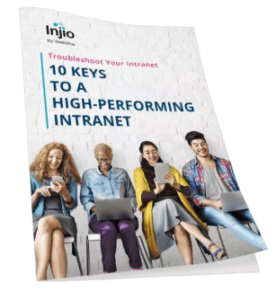If you have recently survived an intranet planning meeting, you can appreciate the difficulties faced by our international peacekeepers, trying to achieve harmony when each party sees different issues, prioritises divergent outcomes and often seem to be speaking another language. The machinations of Rocketman pale in comparison. Managing shifting internal priorities and disagreements between stakeholders can be challenging but at least no-one has access to WMDs.
While true harmony may never be achieved, spending some time thinking through the needs and motivations of each party can help you find solutions to unify the often-conflicting demands of your business functions.
For most IT managers, top priorities are stability, reliability and security. Particularly in companies for whom customer data and brand trust are the organisation’s major assets, it is clear why IT has a relatively conservative agenda. Untested and potentially unstable apps, firewall exceptions allowing flexible access, fast deployment of new technologies… these are the things that give IT nightmares.
“More than 80% of U.S.-based IT pros report feeling at least somewhat stressed at work. As IT infiltrates more areas of a company, IT pros find themselves responsible for ensuring more systems and software run correctly, assisting more people within the company.” [1]
Marketing on the other hand are rewarded for pushing boundaries, acquiring more customers and higher sales through more channels, accepting a wide range of payment types, developing innovative brand experiences and speed to market of new ideas. IT’s security roadblocks and suppression of their ideas is frustrating.
HR has to hire, fire, pay and train the staff, plus deal with problems, build and monitor the company culture while balancing the interests of employees, the business and the relevant laws and regulations. Like IT, one slip-up from HR can have costly and embarrassing repercussions for the company.
The general populace of workers in the knowledge economy are a mix of 5 generations, all with their own needs and concerns. They just want to get their work done as efficiently as possible – in the office and on the go – and feel satisfied with their contribution at the end of the day. They may have negative connotations of intranets due poor user experiences in the past.
The C-suite have their own problems. Dealing with shareholders’ demands for returns in a tighter economy, fragmented markets, surprise disruptions, political instability and structuring the organisation effectively to not only navigate but profit from these unstable times are some reasons why they have not taken a moment to consider whether people like their SharePoint interface.
SO WHAT NOW??
If you are trying to herd these cats towards a successful intranet implementation, communication is key. The above points are of course a general picture and do not take into account each participant’s personal situation, experience or workload. Ensure you are monitoring your stakeholders and their expectations throughout the project – not just at the kickoff meeting. Set yourself reminders to catch up with your key stakeholders every now and then outside the formal project meetings, to keep them up to date and understand their individual perspectives and challenges. This will help keep the project top of mind, as well as make people feel like they are being heard, which is the first step to peace talks.
A growing range of software-as-a-service (SaaS) products is enabling new technology solutions to be more easily sourced from external vendors, with minimal dependence on IT, real benefits for busy staff and demonstrable outcomes for the C-suite. Injio is an accelerator that delivers a responsive, fully functional SharePoint intranet in weeks, with benefits for all stakeholders:
- Communications have an attractive channel to publish news and announcements
- Human Resources have a tool to share up-to-date policies and advertise roles internally
- IT can outsource intranet build, ongoing maintenance and updates to a reliable supplier on a Microsoft platform that is secure
- Employees and teams can reduce email and meetings, access documents and enterprise tools on the go, work more efficiently and go home earlier, knowing they have contributed.
There may always be some tension between HR, Marketing and IT simply because of their different positions in the spectrum of a company’s overall structural needs. But facilitating a smart digital workplace solution that acknowledges and addresses the needs of each party is a good start towards world peace.
[1] Under pressure: IT pros feel the stressful weight of growing tech demands CIO Dive https://www.ciodive.com/news/under-pressure-it-pros-feel-the-stressful-weight-of-growing-tech-demands/443213/
This entry was posted in Digital Transformation, People, SharePoint and tagged Digital workplace, Intranet, project team. Bookmark the permalink.







